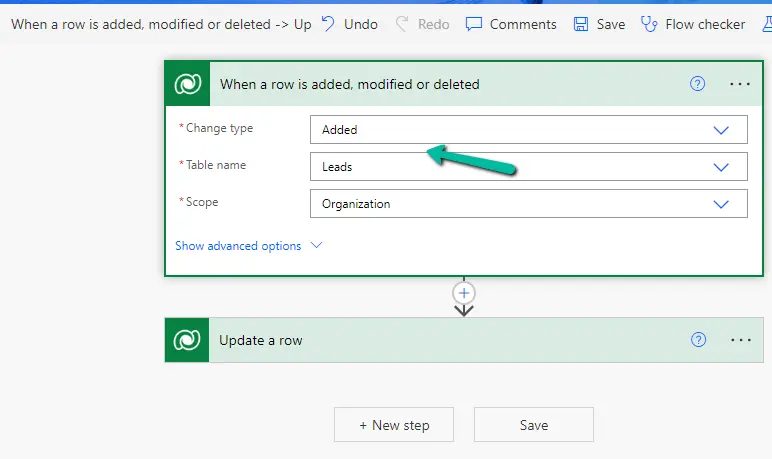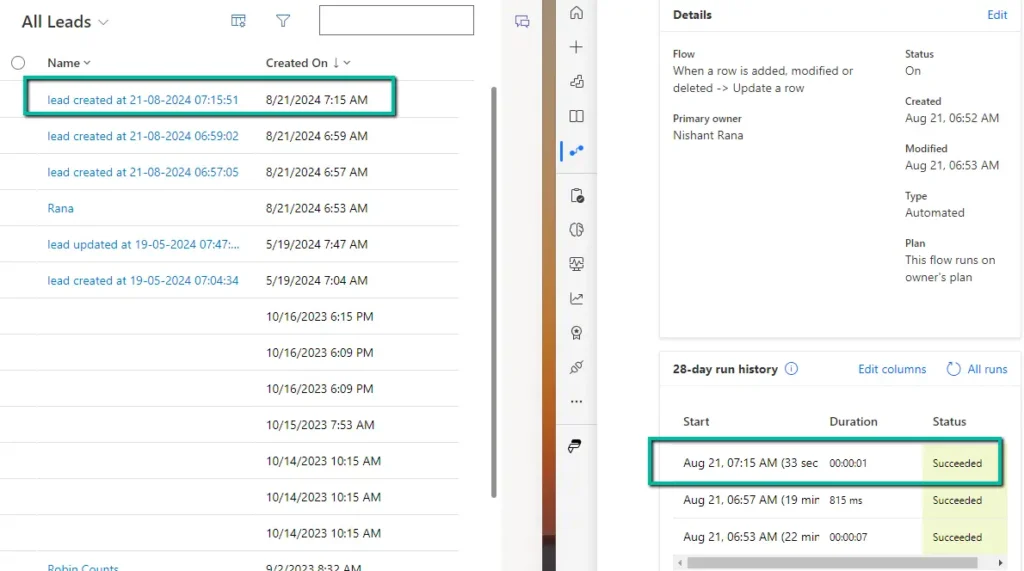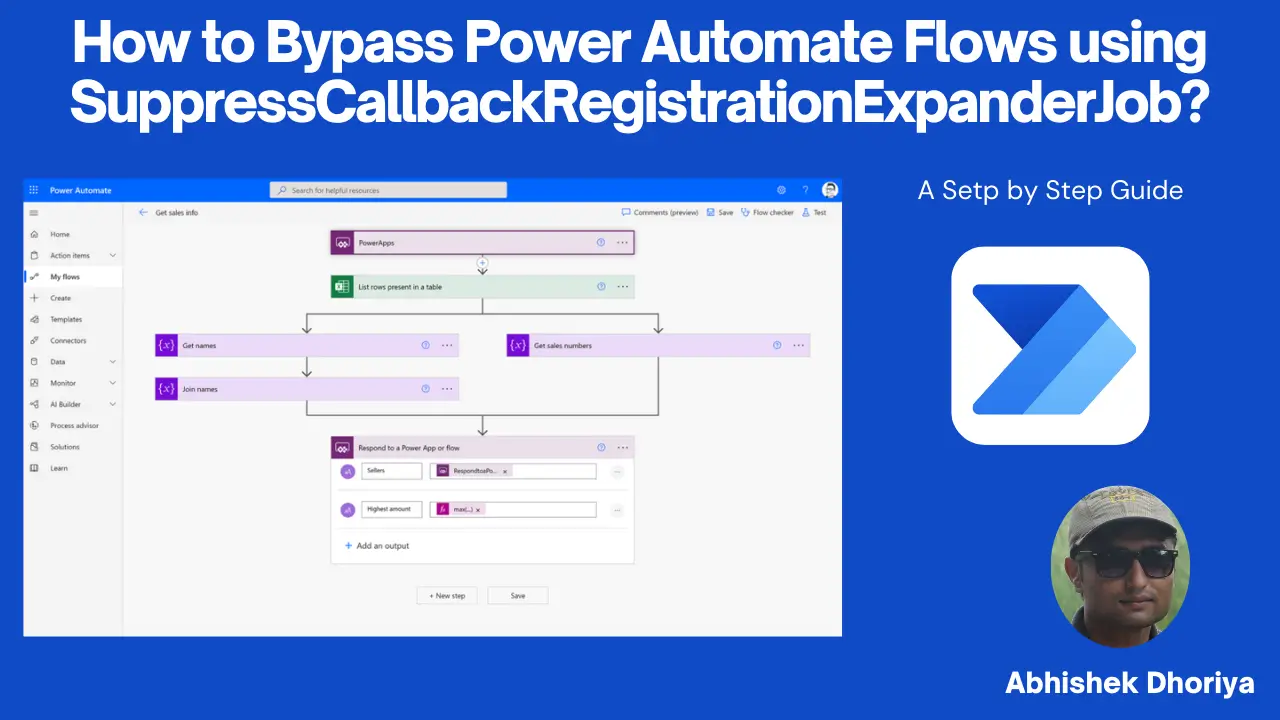How to Bypass Power Automate Flows in Dynamics 365?
Are you a beginner trying to navigate the complexities of Power Automate Flows in Dynamics 365? Do terms like SuppressCallbackRegistrationExpanderJob and Dataverse leave you scratching your head? Fear not! This comprehensive guide will explain how to easily bypass Power Automate Flows and simplify your workflow in a friendly, conversational, and easy-to-understand way.
Understanding Power Automate Flows can be intimidating, especially when you need to bypass certain flows in Dynamics 365. Whether you are new to the world of automation or just trying to get a handle on specific features, this guide will walk you through everything you need to know.
What is Power Automate and Dynamics 365?
Power Automate is a service that helps you create automated workflows between your favorite apps and services to synchronize files, get notifications, collect data, and more. Dynamics 365 is Microsoft’s suite of intelligent business applications designed to help you run your entire business with predictive, AI-driven insights.

Introduction to SuppressCallbackRegistrationExpanderJob
SuppressCallbackRegistrationExpanderJob might sound like a mouthful, but it’s a powerful tool in your automation toolkit. Essentially, this is a feature in Dataverse (the backbone of Dynamics 365) that allows you to bypass Power Automate Flows. The benefit? Enhanced control and flexibility in your workflows!

Understanding Dataverse in Power Automate
Before diving into how to bypass Flows, it’s important to understand Dataverse. Formerly known as the Common Data Service (CDS), Dataverse allows you to securely store and manage data used by business applications. Here’s a quick breakdown:
- Dataverse Entities: These are tables that store your data.
- Dataverse Relationships: These define how entities are related to each other.
- Dataverse Actions: These are operations you can perform on your data.
With this foundation, let’s explore bypassing Power Automate Flows.
How to Bypass Power Automate Flows using SuppressCallbackRegistrationExpanderJob?
To bypass flows using the SuppressCallbackRegistrationExpanderJob parameter in Dataverse, you need to understand the following steps:
Step 1: Identify the Flow
Determine which Power Automate Flow you wish to bypass. This could be a flow triggered by actions in Dynamics 365 or any connected application.
Step 2: Use the SuppressCallback Parameter
Leveraging the suppressCallback parameter is the key. This parameter is used in the API call to suppress the specific flow execution.
Example Usage in Code:
{
"data": {
"suppressCallback": true,
"otherParameters": "value"
}
}
Step 3: Implement and Test
Integrate the suppressCallback parameter into your flow logic and thoroughly test to ensure it works as expected.
Use Cases of Bypassing Flows in Dynamics 365
- Data Import: When importing large datasets, bypassing flows can prevent overloading your system.
- Automated Testing: Disable flows during tests to maintain clean and controlled test environments.
- Data Migration: Ensure smooth data migration without triggering unnecessary flows.

Setting Up a Flow to Create a Lead Record without Triggering an Automation in Dynamics 365
Here’s a straightforward example of how to create a lead record without triggering a flow:
Step 1: Create the Flow
- Navigate to Power Automate.
- Select “Create” and choose “Automated Flow.”
- Set the trigger to “When a record is created.”
Step 2: Add the SuppressCallback Parameter
When specifying the action in the Flow, use conditional logic to incorporate the suppressCallback parameter.
Step 3: Test Your Flow
Run the Flow and create a lead record to ensure it bypasses the automation as expected.
Conclusion
Bypassing Power Automate Flows in Dynamics 365 might sound complicated but with the right tools and knowledge, it’s a manageable task. Understanding and leveraging SuppressCallbackRegistrationExpanderJob and the suppressCallback parameter can give you the control and flexibility you need within your workflows. Happy automating!
Frequently Asked Questions (FAQs)
What is SuppressCallbackRegistrationExpanderJob in Dataverse?
SuppressCallbackRegistrationExpanderJob is a feature in Dataverse that allows you to bypass Power Automate Flows, giving you greater control over your workflows.
How to bypass Power Automate flows using SuppressCallbackRegistrationExpanderJob?
You can bypass flows by using the suppressCallback parameter in your API calls to Dataverse, effectively disabling specific flows.
Can we bypass flow execution in Dynamics 365?
Yes, you can bypass flow execution in Dynamics 365 using the suppressCallback parameter.
What parameters can be used to bypass flow triggers in Power Automate?
The primary parameter used is suppressCallback, which you incorporate into your flow logic to bypass execution.
How to create a lead record without triggering a flow in Dynamics 365?
To create a lead record without triggering a flow, you need to set up an automated flow with the suppressCallback parameter integrated.
#MSFTAdvocate #AbhishekDhoriya #LearnWithAbhishekDhoriya #DynamixAcademy
References & Read More:
- Mastering Visual Studio Code Search Scoping
- Effortlessly Create and Associate Folders in SharePoint Using Dynamics 365
- Unveiling Microsoft Power Platform Catalog Features
- Exploring AI-Generated Breakpoint Expressions with Visual Studio 2022 and GitHub Copilot
- Understanding Microsoft Power Platform ROI for Beginners
